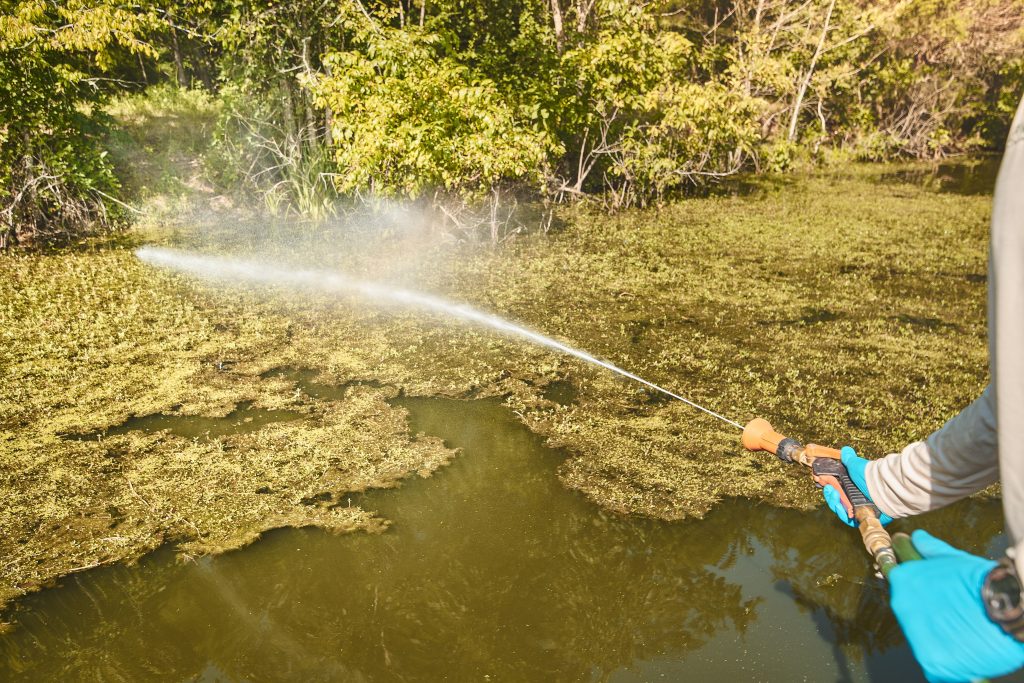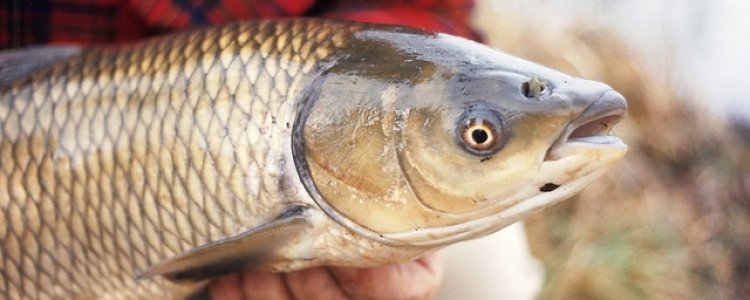Navigating through the myriad of options available in the market for pond weed killer can be a daunting task for pond owners looking to maintain a healthy and aesthetically pleasing aquatic environment. The plethora of products, each boasting unique features, and specifications, make the choice anything but straightforward. Whether you are grappling with stubborn submerged weeds, striving to control emergent vegetation, or looking for an eco-friendly solution, this guide sheds light on the various types of pond weed killers and pond weed control measures you can use, their application, effectiveness, and environmental impact. By delving into the critical aspects to consider and addressing common queries, we aim to streamline your pond weed control process and help you reclaim the balance of your pond.
What Causes Excessive Pond Weeds?
Excessive pond weeds can be a source of major concern, and their proliferation can be attributed to several factors. Understanding these factors is crucial to implementing effective control measures. Agricultural and residential runoff rich in nutrients, particularly phosphorus and nitrogen, can lead to eutrophication, which fuels the growth of pond weeds and algae. Shallow ponds or areas within ponds that receive more sunlight can facilitate the photosynthesis and growth of aquatic plants, including weeds.

Stagnant or slowly moving water can promote the accumulation of nutrients and foster the rapid growth of weeds. The accumulation of organic sediment at the bottom of the pond can create a fertile ground for weed seeds to germinate and grow. The introduction of non-native or invasive plant species can outcompete native plants, leading to uncontrolled growth and dominance. Warm, sunny, and calm weather conditions are favorable for weed growth, especially when coupled with ample nutrient availability. Neglecting regular pond maintenance, such as periodic removal of weeds and managing nutrient levels, can result in overgrowth.
Addressing these causes through preventative and control measures such as proper nutrient management, maintaining optimal water depth and circulation, biological control, and regular maintenance, can help in managing excessive pond weed growth effectively.
Pond Weed Control Without Aquatic Herbicide
Controlling pond weeds without the use of aquatic herbicides is a holistic approach, focusing on methods that aim to maintain a balanced ecosystem. If you’re in the southeast, a great resource for pond weed control is Southeastern Pond Management. They offer a 100% control guarantee which means that they will eliminate all existing vegetation, regardless of the number of applications required. They provide a cost quote, and that is all you pay, whether it takes 2 applications or 10! They offer pond weed control with and without the use of herbicides which depend on your pond’s unique situation. Here are several strategies that can be used for managing pond weeds without relying on chemical solutions:
Pond Weed Removal Through Mechanical And Biological Control
Suitable for small ponds or light infestations, physically removing the weeds through hand pulling can be effective, especially when done consistently. Specialized aquatic rakes can help gather and remove floating and submerged weeds. Underwater weed cutters can be used for denser infestations, followed by the removal of the cut vegetation. Last are benthic barriers, these are lake-bottom barriers that inhibit weed growth by blocking sunlight.
Triploid Grass Carp For Ponds
Stocking the pond with grass carp, a herbivorous fish species can help control certain aquatic weeds as they feed on them. Grass carp can offer a long-term method of vegetation control at a relatively low cost; particularly if the problem weed is one of the fish’s preferred plants. Grass carp should be stocked at a rate of 25 to 30 per vegetated acre and when they are about 8 to 12 inches in length to avoid predation by bass. They typically grow quickly and achieve very large sizes, often exceeding 50 pounds. They feed most efficiently when they are young and therefore should be restocked every few years. Grass carp will not reproduce in a pond environment. Even though grass carp do not reproduce in ponds and lakes, many states restrict the sale and use of diploid fish. To avoid the potential for escaped fish to enter large river systems and possibly reproduce, many states require the use of sterile triploid (3 sets of chromosomes) grass carp.

Environmental Control Of Pond Weeds
There are many ways that you can manage the environment of your pond to prevent and control aquatic weeds. Managing nutrient input by controlling runoff and using buffer strips can reduce weed growth. Planting trees or adding structures that block sunlight can inhibit the growth of sunlight-dependent weeds. Adjusting water levels seasonally can disrupt the life cycle of aquatic weeds. Pond design and maintenance can also play into weed control.
Designing ponds with steep banks and adequate depth can deter weed establishment. Encouraging the growth of native aquatic plants that compete with weeds for nutrients can help maintain balance. Diffused aeration systems can increase oxygen levels and improve water circulation, creating an environment less conducive to weed growth. Periodic removal of accumulated organic sediments reduces the nutrient-rich substrate in which weeds grow.
Controlling pond weeds without chemicals involves a combination of mechanical, biological, environmental, and preventive strategies. While these methods can be labor-intensive and may require ongoing effort, they contribute to the overall health and balance of the aquatic ecosystem. Regular monitoring and timely intervention are crucial to ensuring the success of these non-chemical control measures.
Aquatic Herbicide Options
The presence of unwarranted vegetation can upset the ecological balance of a pond, necessitating informed intervention. In this section, we delve into a spectrum of aquatic herbicides used as pond weed killer, each characterized by distinct properties, modes of action, and suitability for different types of weeds and pond environments. From contact to systemic herbicides, selective to non-selective, we dissect the myriad options, aiding you in discerning the most apt solution tailored to your pond’s specific needs and ensuring the preservation of its delicate ecosystem.
Diquat Aquatic Herbicide
Diquat is a well-known, fast-acting contact herbicide used in the management of a variety of aquatic weeds. It’s highly effective for controlling submerged, floating, and emergent weeds in ponds, lakes, and other water bodies. Diquat acts by interfering with the process of photosynthesis within the plant cells. It quickly penetrates the plant tissues, disrupting the energy production of the plant, leading to the generation of highly reactive compounds which damage the plant cell membranes. This rapid mode of action leads to the visible wilting, yellowing, and eventual death of the treated plants within days.
Proper dosage is essential, and it usually depends on the type and density of the weeds being treated. Early application, when weeds are actively growing, yields better results. Diquat as a pond weed killer is typically applied through spraying. The herbicide needs to make contact with the foliage of the plant, ensuring better absorption. Sometimes, Diquat is used in combination with other herbicides to enhance the spectrum of control and manage a broader range of weed species. Diquat is effective against a variety of aquatic weeds, including duckweed, pondweed, hydrilla, coontail, and milfoil, making it a versatile choice for many pond owners.

Diquat is quickly deactivated upon contact with soil and sediment, reducing its risk to the environment. While Diquat is relatively safe, it’s important to follow labeled guidelines to minimize impact on fish and other aquatic organisms. There may be restrictions on the use of treated water for irrigation, drinking, and recreational activities, so it is important to refer to the product label for guidance. Users must follow safety precautions outlined on the label, including wearing protective clothing and avoiding drift to non-target areas, to ensure the safe handling and application of Diquat. Diquat Aquatic Herbicide offers a reliable solution for controlling a multitude of aquatic weeds. Its fast-acting nature, versatility, and relatively low environmental impact make it a popular choice among pond managers. However, appropriate application, adherence to guidelines, and consideration of environmental and safety factors are essential for optimizing its efficacy and minimizing risks.
Aquatic Herbicides Safe For Fish
Maintaining a balanced aquatic environment while controlling invasive weeds is crucial for the wellbeing of the fish population in a pond or lake. Fortunately, several aquatic herbicides are deemed safe for fish when used according to label instructions. Here is an overview of some of the herbicides that are generally considered safe for fish:
- Fluridone
- Brand Names: Sonar, Avast!
- Target Weeds: Effective against a broad spectrum of submerged weeds like hydrilla, duckweed, and Eurasian watermilfoil.
- Usage: It’s a systemic herbicide that needs to be applied early in the growing season, with treatment levels maintained for several weeks.
- Fish Safety: Considered safe for fish when used according to label guidelines.
- 2,4-D
- Brand Names: Navigate, Weedar 64
- Target Weeds: Primarily used against emergent and floating-leaf weeds such as water lilies and Eurasian watermilfoil.
- Usage: Applied as granules or liquid, it acts systemically to kill the entire plant.
- Fish Safety: Generally safe for fish at recommended application rates.
- Glyphosate
- Brand Names: Rodeo, Aquaneat
- Target Weeds: Effective against emergent vegetation like cattails and reed grass.
- Usage: Glyphosate is a non-selective, systemic herbicide applied to the foliage of the plants.
- Fish Safety: When used as directed, it poses minimal risk to fish.
- Triclopyr
- Brand Names: Renovate, Navitrol
- Target Weeds: Used for controlling woody plants and broadleaf weeds such as water lilies and Eurasian watermilfoil.
- Usage: Triclopyr is a systemic herbicide and is typically applied as a liquid spray.
- Fish Safety: Considered to be low-risk for fish when applied according to label instructions.
- Cutrine-Plus
- Active Ingredient: Copper Ethanolamine Complex
- Target Weeds: Effective against algae, chara, and other filamentous species.
- Usage: Available in granular and liquid forms and acts as a contact algaecide and herbicide.
- Fish Safety: Safe for fish at labeled rates, but application rates should be adjusted in waters with high alkalinity.
While several aquatic herbicides are considered safe for fish, it is imperative to use them judiciously, adhere to label recommendations, and monitor aquatic health.
Pond Weed Killer Conclusions
As you can see, there are many options for managing pond weeds. Some require a complex understanding of aquatic vegetation and the various herbicide chemistries that will effectively control them, others require rolling up your pant legs and sweating. No matter which pond weed killer route you decide to go, adopting a holistic approach and seeking professional advice can further ensure the well-being of the fish population and the overall aquatic ecosystem and create a pond environment that will not only be healthy but aesthetically pleasing as well.




